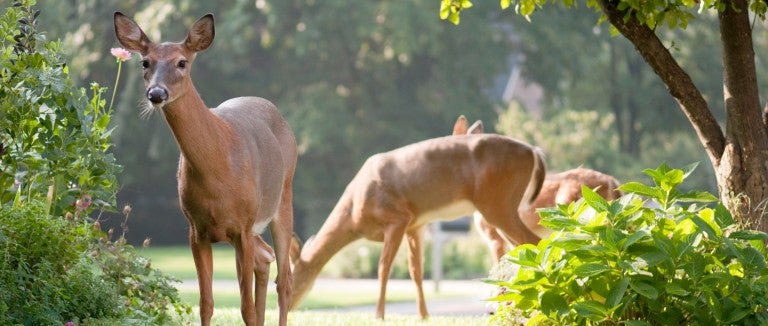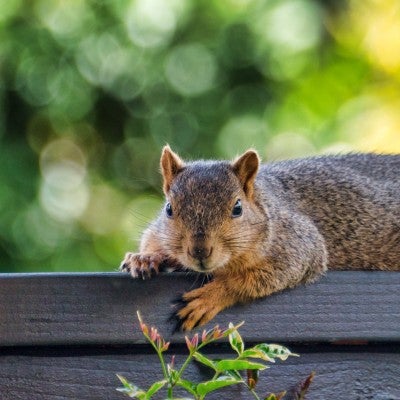Your garden couldn’t flourish without wildlife. Butterflies, bees, bats and hummingbirds help with pollination, while groundhogs, moles and worms work on soil aeration, just to mention a few of the key players. Even so, you may not want your flowers and vegetables becoming someone’s snack. Plan ahead to preempt uninvited foragers.
Know your wild neighbors
- Which wildlife species visited last year and what did they eat?
- Learn more about these species and humane ways to keep them at bay: Chipmunks, deer, rabbits, raccoons, groundhogs.
- If you don’t happen to see the animal(s) dining in your garden, try to match up tracks, scat or evidence of chewing with photos in tracking guides. Then choose the right fence or other tactics to protect what they’re after.
Gather local garden wisdom
- Reflect on your own experiences and keep a journal of what does and doesn’t work well in your gardens.
- Ask neighbors what has worked in their gardens.
- Check with your local native plant society and cooperative extension office about which plants are least likely to be eaten by wildlife in your area, as preferences vary both regionally and locally.
Protect against the predictable
- Pick timing and placement of plantings carefully. Plants are most at risk before natural vegetation greens up, as are plants that can be nibbled out of view or close to cover. If you don’t want to delay planting, plant the most palatable plants close to the house and protect them with covers or plastic jugs in the early stages.
- Install fencing of the appropriate height and type for the animals you need to keep away from your plants. Single-strand electric fences can be effective deterrents, but they are not appropriate in yards used by young children or pets.
- Set up scare devices before wild animals visit. Examples include Mylar balloons or tape (which scare by fluttering in the wind), motion-activated sprinklers, acoustic alarms, radios or even clumps of dog hair.
Tips for the flower garden
- Plant species that are not favored by wildlife where foraging animals will encounter them first.
- Choose daffodils over tulips or crocuses, as they are not tasty to squirrels.
- Soak other bulbs in thiram-based repellent and plant them in bulb cages.
Tips for the veggie garden
- Border your veggie garden with plants deer find unpalatable.
- Fence in your veggie garden with the appropriate height and type of fence, and use bird netting and plant covers, as needed.
- Monitor veggie plants daily to harvest what’s ready and to quickly detect any garden visits by wildlife. Follow up with scare devices for the species in question.
A final word
A little careful planning will enable you to enjoy your gardens more once they’re growing—with fewer unpleasant surprises. Knowing that the majority of your flowers and veggies are better protected will make it easier to smile and shrug off the occasional (and surely forgivable) sign of a wild neighbor’s nibbling.

